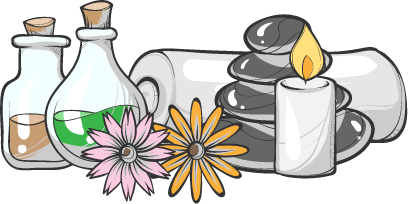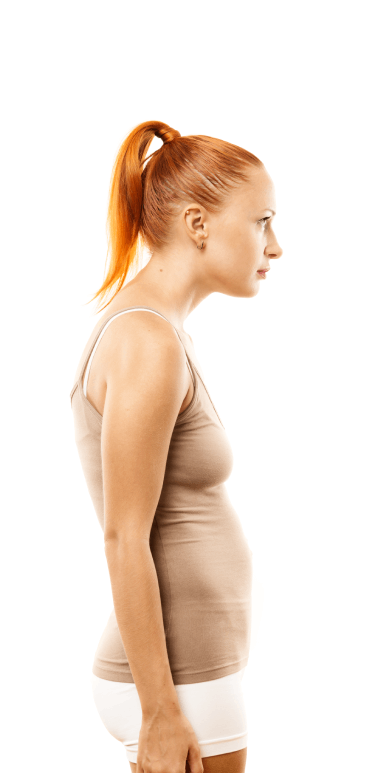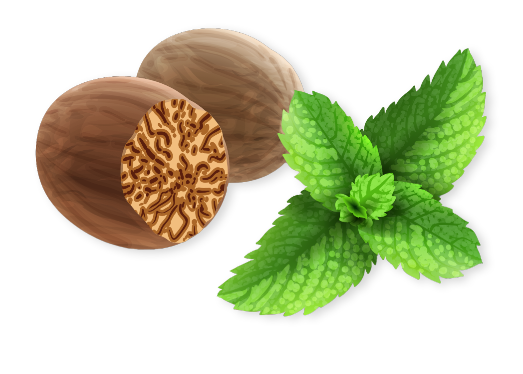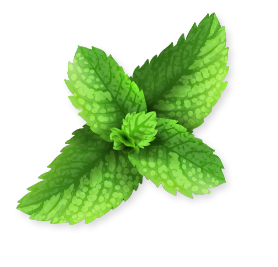AYURVEDIC
TREATMENT FOR
KYPHOSIS
Ayurvedic treatment for kyphosis in Kerala may include Panchakarma therapies like Abhyanga and Swedana, herbal remedies to strengthen the spine, yoga exercises for posture improvement, and lifestyle modifications such as a balanced diet and stress management. Consult with an Ayurvedic practitioner for personalized treatment.

WHAT IS
KYPHOSIS
Kyphosis is a condition marked by an excessive forward curvature of the upper spine, leading to a rounded or hunched posture. It can affect people of all ages and is categorized into structural kyphosis, a permanent curvature due to spine abnormalities, and postural kyphosis, a reversible condition corrected by improving posture. Hyperkyphosis denotes an exaggerated curvature beyond the normal range, often resulting in a visible hump on the upper back, known as the “kyphosis hump.”
SIGNS & SYMPTOMS OF KYPHOSIS
- Mild back pain
- Fatigue
- Spine stiffness
- Rounded shoulders

CAUSES OF KYPHOSIS
The causes of kyphosis can vary and may include:
- Poor posture:
Prolonged slouching or maintaining a hunched posture over time can contribute to the development of kyphosis. - Age-related changes:
Cervical spondylosis, a degenerative condition that affects the cervical spine, can lead to kyphosis in older adults. - Fractures:
Fractures in the vertebrae, such as compression fractures, can cause the spine to collapse and result in kyphosis. - Injury to the spine:
Traumatic injuries or accidents that affect the spinal column can lead to abnormal spinal curvature. - Slipped discs:
Herniated or slipped discs in the spine can contribute to kyphosis, particularly when they affect the alignment and stability of the vertebral column.
Other less common causes of kyphosis may include congenital spinal deformities, neuromuscular conditions (such as muscular dystrophy or cerebral palsy), connective tissue disorders, or certain medical conditions affecting bone health.

TYPES OF KYPHOSIS
Postural kyphosis
This is the most common type of kyphosis and typically occurs due to poor posture habits, such as slouching or sitting in a hunched position for extended periods. It is reversible and can be improved with proper posture correction.
Scheuermann’s kyphosis
This type of kyphosis typically develops during adolescence and is characterized by wedging of the vertebrae in the upper back. It can lead to a more rigid and fixed curvature of the spine.
Congenital kyphosis
Congenital kyphosis is present at birth and is caused by abnormal spinal development during fetal development. It can vary in severity and may require medical intervention depending on the degree of curvature and associated complications.
Post-traumatic kyphosis
This type of kyphosis occurs as a result of spinal fractures or injuries. It can develop after a traumatic event or due to the improper healing of a spinal fracture.
RISKS OF KYPHOSIS
Kyphosis can pose several risks and potential complications, including:
- Chronic pain
- Limited mobility and flexibility
- Respiratory problems
- Cardiovascular issues
- Digestive problems
- Spinal cord compression
Early detection and appropriate management can help prevent the progression of kyphosis and minimize potential complications. A healthcare professional or specialist, such as an orthopedic surgeon or spine specialist, can provide a comprehensive evaluation, diagnosis, and treatment options based on your specific situation.
HOW AYURVEDA CAN TREAT KYPHOSIS
Ayurveda, the traditional Indian system of medicine, offers holistic approaches to support the management of various health conditions, including kyphosis. While Ayurveda cannot reverse the structural changes of kyphosis, it can help alleviate associated symptoms and promote overall well-being. Here are some ways Ayurveda can be used in the treatment of kyphosis:
Herbal remedies
Ayurvedic herbs and formulations may be prescribed to support spine health, reduce inflammation, and strengthen the musculoskeletal system. Examples include Ashwagandha, Guggulu, Shallaki, and Rasna. These herbs are believed to have anti-inflammatory, analgesic, and rejuvenating properties.
Diet and nutrition
Ayurveda emphasizes the importance of a balanced and nutritious diet to support overall health. A diet rich in fresh fruits, vegetables, whole grains, lean proteins, and healthy fats can provide essential nutrients to support bone health and reduce inflammation.
Yoga and exercise
Specific yoga asanas (poses) and exercises can help improve posture, increase flexibility, and strengthen the back muscles. Practices that focus on spinal extension, such as Bhujangasana (Cobra Pose), Dhanurasana (Bow Pose), and Setu Bandhasana (Bridge Pose), may be beneficial. Consult with a qualified yoga instructor for guidance.
Abhyanga (therapeutic oil massage)
Abhyanga, a traditional Ayurvedic oil massage, can help alleviate muscle tension, improve circulation, and promote relaxation. Massage techniques targeted at the back and spine area can provide relief from discomfort associated with kyphosis.
FREQUENTLY ASKED
QUESTIONS
How to fix Kyphosis?
Fixing kyphosis involves a multifaceted approach that aims to improve posture, strengthen muscles, and promote spinal alignment. While it may not be possible to completely reverse structural changes, these steps can help manage and improve the condition:
1. Posture correction: Focus on maintaining good posture throughout the day. Be mindful of sitting and standing upright, avoiding slouching, or hunching forward. Sit with your back supported and feet flat on the floor and use ergonomic chairs or cushions if needed.
2. Exercise and stretching: Engage in exercises that target the muscles of the back, neck, and core to strengthen and support the spine. Include exercises that improve flexibility and range of motion, such as stretching the chest and hip flexors. Consult with a physical therapist or qualified fitness professional for a tailored exercise program.
3. Yoga and Pilates: These practices can be beneficial for improving posture, strengthening muscles, and increasing flexibility. Specific poses and exercises that focus on spinal extension and strengthening the back muscles can help in managing kyphosis. Seek guidance from a qualified instructor familiar with working with individuals with kyphosis.
4. Physical therapy: A physical therapist can provide specialized exercises, manual therapy techniques, and postural education to help address muscle imbalances, improve spinal alignment, and reduce pain associated with kyphosis.
5. Lifestyle modifications: Maintain a healthy weight to reduce stress on the spine and promote overall musculoskeletal health. Avoid excessive sitting or standing for prolonged periods and incorporate regular movement and breaks into your daily routine.
6. Orthotic devices: In some cases, specially designed braces or postural supports may be recommended to help improve spinal alignment and provide support.
7. Medical intervention: In severe cases or if other interventions do not provide sufficient relief, medical intervention such as surgery may be considered. This is typically reserved for significant spinal deformities or when other conservative measures are ineffective.
Can Kyphosis be reversed?
In most cases, it is not possible to completely reverse the structural changes associated with kyphosis. Once the spine has developed an abnormal curvature, particularly in cases of structural kyphosis, the curvature is likely to persist to some degree. However, the progression of kyphosis can often be halted or slowed down with appropriate interventions, and the associated symptoms can be managed effectively.
Treatment approaches such as exercise, physical therapy, and postural correction can help improve muscle strength, flexibility, and overall spinal alignment. These measures can lead to improved posture, reduced pain, and better functioning. They can also prevent further worsening of the curvature and associated complications.
While the structural changes may not be reversed, the goal of treatment is to optimize the individual’s quality of life, reduce discomfort, and improve functional abilities. It’s important to work closely with healthcare professionals, such as orthopedic specialists or physical therapists, to develop a comprehensive treatment plan tailored to the individual’s specific condition and needs.
Early detection and timely intervention are crucial in managing kyphosis effectively and minimizing potential complications. Regular monitoring and adherence to recommended treatment strategies can help individuals with kyphosis lead active and fulfilling lives.
How to prevent Kyphosis? Is Kyphosis genetic?
While it may not be possible to completely prevent kyphosis, certain measures can help reduce the risk or minimize its progression:
1. Maintain good posture: Practice proper posture habits while sitting, standing, and walking. Avoid slouching or hunching forward for extended periods. Use ergonomic chairs and supportive cushions if needed.
2. Exercise regularly: Engage in exercises that promote overall strength, flexibility, and posture. Focus on exercises that strengthen the back, neck, and core muscles to support the spine. Incorporate activities that promote spinal extension and correct alignment.
3. Practice ergonomics: Ensure that your workspace is ergonomically designed to support good posture. Adjust the height and position of your desk, chair, and computer to maintain proper alignment while working.
4. Avoid excessive sitting: Take breaks and incorporate regular movement into your daily routine. Prolonged sitting can contribute to poor posture and muscle imbalances.
5. Lift and carry objects correctly: Use proper lifting techniques to minimize strain on your back. Bend your knees, keep your back straight, and lift objects close to your body.
6. Maintain a healthy weight: Excess weight can put additional stress on the spine. Maintaining a healthy weight can help reduce the risk of developing or worsening kyphosis.
Regarding the genetic aspect, some forms of kyphosis have a genetic component. For example, congenital kyphosis is caused by abnormal spinal development during fetal development and can be influenced by genetic factors. However, the majority of cases of kyphosis are not solely attributed to genetics. Other factors such as poor posture, spinal injuries, and certain medical conditions can contribute to the development of kyphosis.
Is Kyphosis curable?
Kyphosis is a condition characterized by an abnormal curvature of the spine, and its curability depends on the specific type and underlying cause. In cases of structural kyphosis, which is caused by structural abnormalities in the spine, complete reversal of the curvature is generally not possible. However, the progression of the condition can often be managed, and symptoms can be alleviated through various treatment approaches.
The goal of treatment for kyphosis is typically to prevent further progression of the curvature, manage symptoms such as pain and stiffness, improve posture, and enhance overall quality of life. Treatment options may include exercises to strengthen the muscles supporting the spine, physical therapy, postural correction, pain management strategies, and, in some cases, bracing or surgery.
It’s important to note that the success of treatment depends on several factors, including the severity of the curvature, the underlying cause, the age of the individual, and their overall health. Early detection and intervention are key to managing kyphosis effectively and preventing complications.
Consulting with healthcare professionals, such as orthopedic specialists or physical therapists, is crucial to receive an accurate diagnosis and develop an appropriate treatment plan based on the individual’s specific condition and needs. They can guide you on the best course of action and help you manage and improve your condition to the fullest extent possible.
BOOK APPOINTMENT























